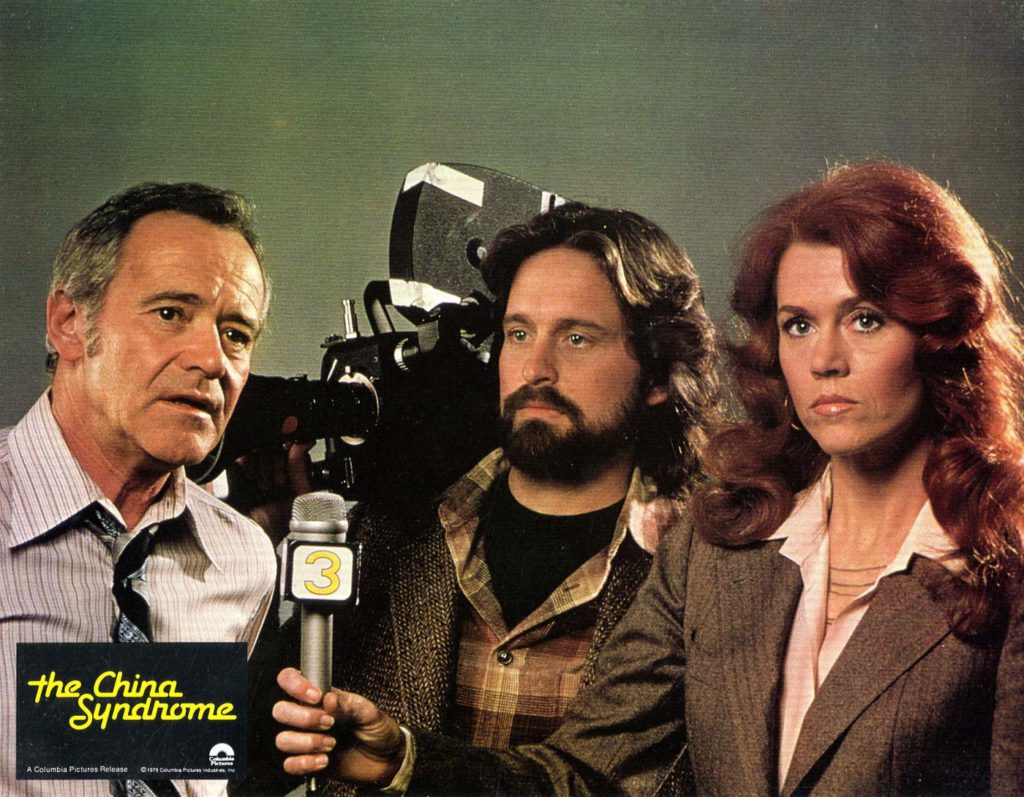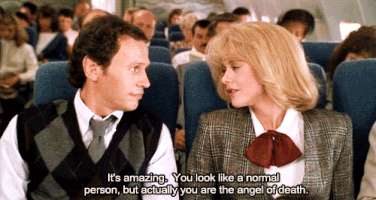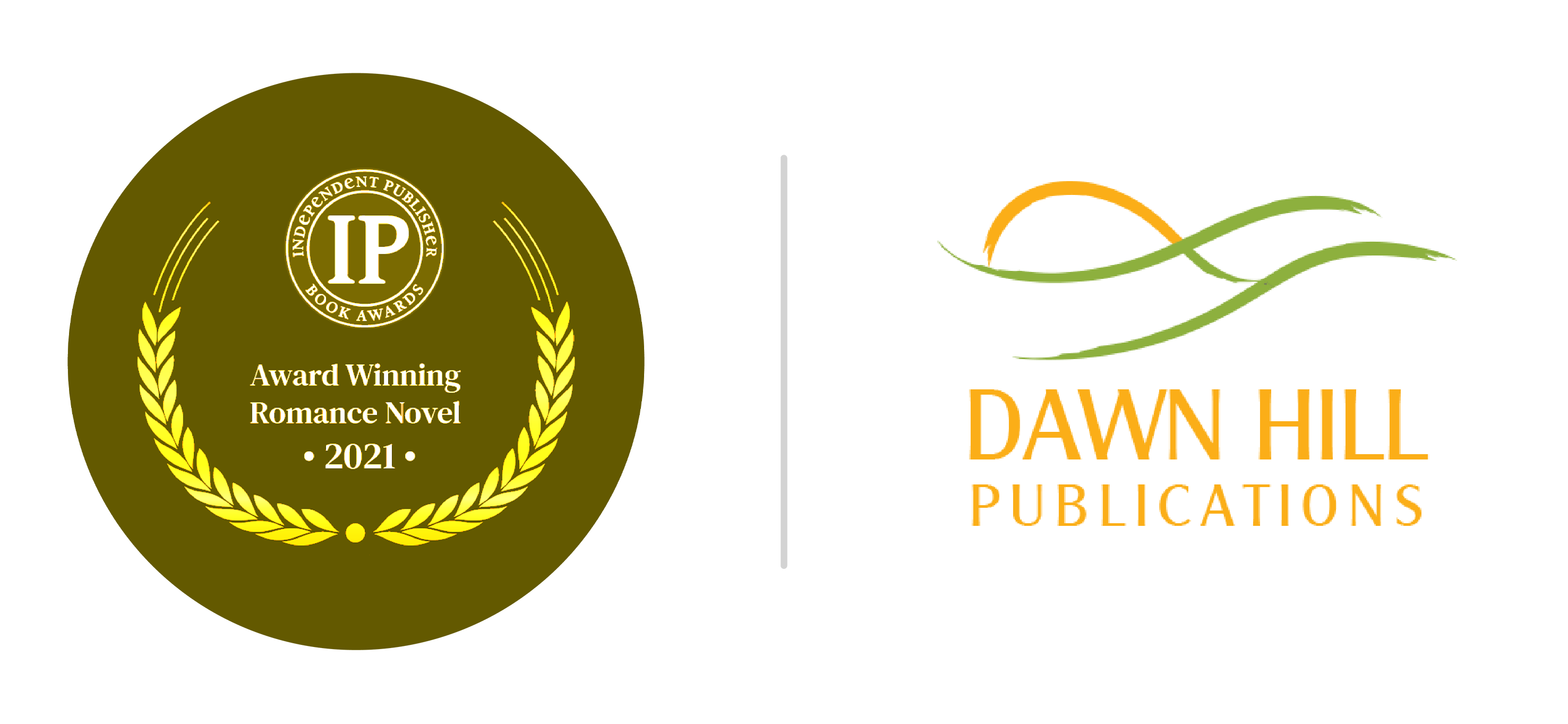My fingers gripped the arms of the narrow coach seat as the aircraft hurtled towards the airport in Hong Kong, a knot forming in my stomach. Michael Douglas, in one of his earliest film roles, with future soulmate Catherina-Zeta Jones probably a prepubescent preteen at the time, fiddled with the camera, making adjustments, while Jane Fonda prepared herself for the interview. It was Jack Lemmon in the hot seat, not really sitting, in a rare non-comic role, sweating and stammering. Anyone recognise the movie? Full marks if you’ve guessed it – China Syndrome.
Let’s jump into movies that have inspired my writing style and 3 things I implement into my stories.

It was the most unforgettable inflight movie I’ve watched in a lifetime of inflight movies travelling the world. Were you aware that Douglas also produced the movie, years after he’d won an academy award, also as producer, for One Flew Over The Cuckoo’s Nest ? That’s all the movie trivia for now, folks. I’ll give it a rest. I grew up on black-and-white TV – Raymond Burr’s Perry Mason, for instance and colour movies – with genres spanning romcoms – of the Doris Day / Rock Hudson variety, westerns including the spaghetti kind, romantic drams, thrillers, action-thrillers, disaster flicks, biopics, period drams, musicals, and the occasional horror.
I simply love this part of writing because I love the opportunity to build personality within a character. If you do it right, your character will write his or her own dialog.
I may have mentioned to you guys that I’m an ardent movie fan in addition to being an avid reader and watcher of TV procedurals. It’s therefore unsurprising that my writing has been inspired, at least in part, by movies. But how, you may ask?
Film, folks, is a very powerful media, leaving lasting impressions and memories, often teaching you life’s lessons. Intelligent filmmakers make you ponder, while all the good ones entertain. Scenes have a way of staying with you, from mentoring scenes between Marlon Brando and Al Pacino to witty exchanges between Billy Crystal and Meg Ryan – my favourite from When Harry Met Sally? ‘No, you pretty much want to nail ‘em too.’ The quotes from Godfather are legendary and need no mention here.
It’s these movie dialogs, coupled with haunting imagery that stay with you, all beginning on the pages of the script – the screenplay. For those of you who have read The Tech, the opus is intended, in part, as a screenplay, or possibly teleplay. Even the chapters are laid out in an episodic manner, cliff-hangers included. I visualise each scene in my head, much as though I’m watching a movie before I put pen to paper, figuratively speaking.

Three Parts To Every Scene
The Ambience
For me, there are three parts to every scene. And I’m not talking about details that might worry an assistant producer. The first is the ambience – the imagery, the setting if you will. Easy enough with visual media, not that straightforward with words. Here, one has to rely on the imagination of readers to some extent, giving them verbal clues to form the image. The trick is not to be overly graphic, nor underwhelmingly so either. Striking the right balance is all important.
The best example that I can think of in this context is Alastair Maclean’s Where Eagles Dare, one of the rare occasions where the movie script followed the book quite closely. More specifically, the scuffle on top of the cable car. It’s the stuff of legends, with the written word warring with the movie depiction – hard to declare a winner. I drew inspiration from both the written word as well as movies, trying to describe the scene and imagining it as I would as a reader.
In the words of a reviewer, I need to make the reader sweat without saying that the day is hot. Believe me when I tell you that this is the hardest part, for economy with words can be as good or as bad as being too descriptive, which sort of loses it for the reader. Alastair Maclean was one of the best at haunting imagery for the action genre, while no one was better at depicting sheer pace as Robert Ludlum. Both have had their works made into very successful movies. For the latter, remember Jason Bourne?
The Dialogs
The second part are the dialogs – exchanges, witty or otherwise. A conversation that must flow quite naturally. There are several challenges, with inspiration drawn quite heavily from movies. First challenge and the biggest by far is the language – grammar, vocabulary, word concatenation, phraseology – need to be distinct and true to the character. You can’t have a woman talk like a man and vice versa. When the same person is doing the writing for all the characters, it’s so very easy to fall into the trap of having all characters being equally erudite, for example.
Challenge 2 is these interchanges need to be natural, flow like a stream. Here, the flaws are easy to spot. Bad scripts are characterised by characters waiting for the other to stop speaking to say their piece, more often than not to further the plot. Not okay. Here, irrelevance is the key.
I simply love this part of writing because I love the opportunity to build personality within a character. If you do it right, your character will write his or her own dialog. Here, I draw upon the greats – the method actors themselves. I imagine how Jack Nicholson prepared for his part in the aforementioned Academy Award winner. Or Bobby de Niro. Or Meryl Streep.
The Emotional Impact
The third part is the emotional impact that I want to create – any of the following: terror, pleasure, laughter, surprise, shock, anxiety, comfort, anguish, pain, redemption, satisfaction – the list is endless. I’ve discovered that this is the easiest of the lot because it is largely plot driven, with laughter being unsurprisingly the most difficult to achieve. I daresay it happens almost by accident as I’m imagining two people sparring with one another. A sense of timing is vital for good comedy – ask any stage actor.
Anxiety is easier – assaults, gunshots, bombs – they all work. Surprise too – a revelation does the trick. Done properly, it’ll seem natural and orderly, but still requires planning. The biggest pitfall to avoid is implausibility, which, to be fair, is more about what not to do than otherwise. All I have to do is remember cringeworthy moments from daytime dramas or badly written procedurals. Movies help because the good ones make you feel these emotions aplenty.
What was it about Gregory Peck wandering the empty palace hall that brought a lump to one’s throat in the last scene of Roman Holiday? Or anxiety when Jack Lemmon stuttered in his interview with Jane Fonda, sounding like a crazed lunatic in China Syndrome? Or terror when Chigurh flips a coin at the gas station to decide the owner’s fate in No Country for Old Men? It’s atmosphere.
To recreate these moments on paper is art of its own purest form, a culmination of all the aforementioned aspects, inspired by unforgettable cinema, well-written magnum opera or combinations thereof. Opinions vary. Words are easier. Words are harder. You decide.
I try. I don’t always succeed. You see, it’s the journey. It has to be fun. It has been for me thus far and I have hopes for the future. Hope you enjoyed it. I know that I did. Let me know what you think.



